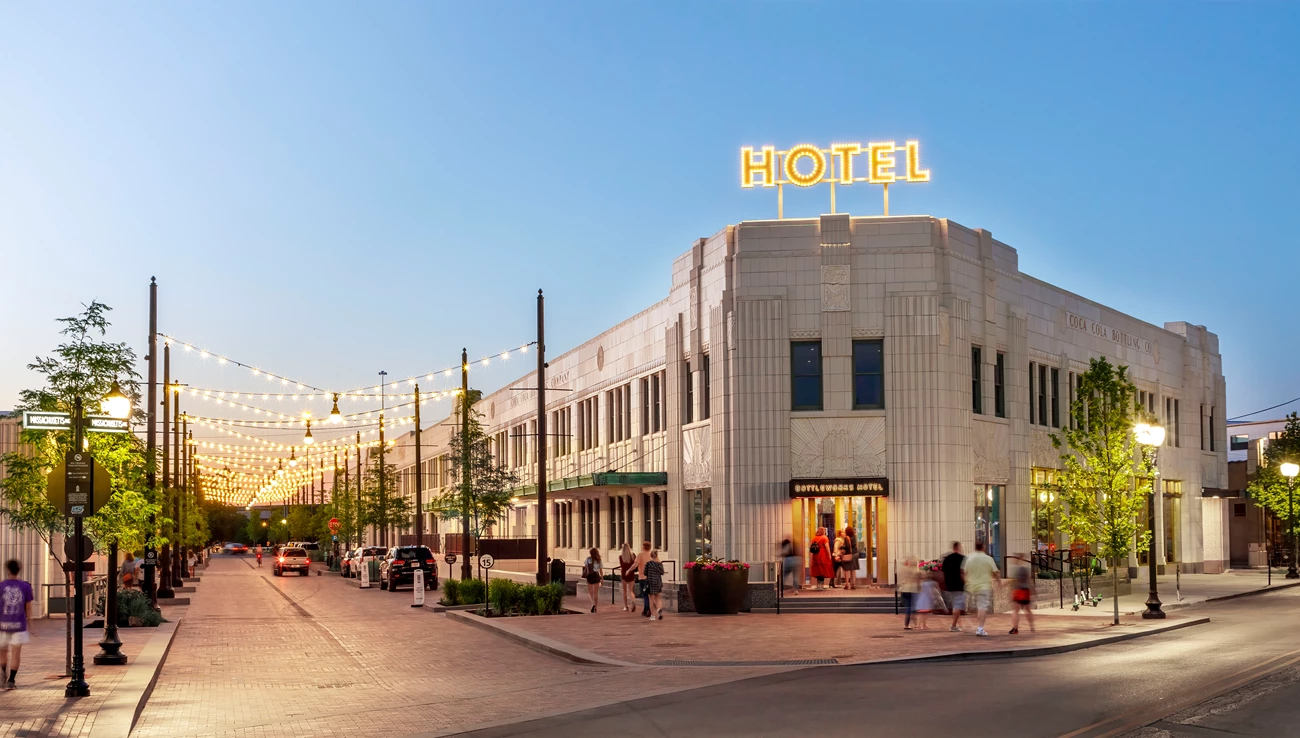Last updated: January 23, 2024
Article
Case Study: Coca-Cola Bottling Plant, Indianapolis, Indiana

Photo: Susan Fleck
Perched on an 11-acre site at the east end of Indianapolis’ Massachusetts Avenue Commercial Historic District, the Coca-Cola Bottling Plant is a shining showpiece of high-style Art Deco design. The main building of the complex comes to a focal point at the corner of Carrollton Ave and Massachusetts Avenue, where the primary façade fronts Massachusetts Avenue, the northeastern of Indianapolis’ four radiating diagonal avenues. The façade is clad in white glazed terra cotta featuring rich Art Deco ornament. The site features three other low-profile, functionally related buildings that are unified by their terra cotta facades and consistent architectural character, thanks to a continuity of design leadership over the more than 25 years of development at the site.
The plant was developed in phases between 1930 and the early 1950s. The first phases of the complex were designed by the prominent Indianapolis architecture firm of Rubush & Hunter, responsible for some of Indianapolis’ most lavish projects of the 1920s. Philip A. Weisenburgh served as chief draftsman for Rubush & Hunter from 1925 and was noted as the firm’s master of ornamentation. Weisenburgh succeeded the firm upon the partners’ retirement in 1940 and designed additions and renovations at the Sit into the 1950s.
Recently brought back to its former glory by Hendricks Commercial Properties and Ratio Architects, LLC, the project team did more than restore thousands of exterior white terra cotta tiles accented by hand-lettered gold leaf. They preserved the lavish interior’s intricate balustrades, glazed tile mosaics, and vaulted ceilings found throughout the main building and garages while reinventing the site by connecting it to the community and creating a boutique hotel. Surrounding streets and sidewalks were rejoined to the city grid, improving vehicle circulation and pedestrian access. The new Bottleworks District and hotel lie along the Indianapolis Cultural Trail, a multi-modal urban trail that connects Indianapolis’ downtown with surrounding cultural and historic districts, regional greenways and bicycle routes. .
As one of the largest private investment projects in Indiana, the Bottleworks District project highlights how private and public partners, with the right mix of resources, can turn brownfield liabilities into a remarkable redevelopment success story.The total investment included City funding to assist with the purchase of the land and the environmental remediation, Indiana Economic Development Corporation Industrial Recovery/DINO Program funding, as well as traditional lender debt and owner equity.
